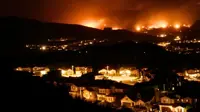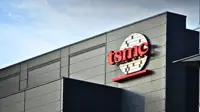US conducts sub-critical nuke experiment
07 Dec 2012
The United States on Friday conducted a sub-critical nuclear experiment at its Nevada National Security Site (NNSS), the National Nuclear Security Administration (NNSA) said in a release
The agency said the Pollux, a sub-critical experiment conducted by staff from NNSS, Los Alamos National Laboratory and Sandia National Laboratories, was successful and that scientific data gathered from the experiment will provide crucial information to maintain the safety and effectiveness of the nation's nuclear weapons.
Since the experiments are sub-critical, no critical mass is formed and no self-sustaining nuclear chain reaction can occur; thus, there is no nuclear explosion, the agency said.
''Challenging sub-critical experiments maintain our capabilities to ensure that we can support a safe, secure and effective stockpile without having to conduct underground testing,'' said NNSA administrator Thomas D'Agostino. ''I applaud the work done by the men and women who worked to make this experiment successful. Experiments such as this help deliver President Obama's nuclear security agenda.''
Pollux was the 27th sub-critical experiment to date. The previous sub-critical experiment, Barolo B, was conducted on 2 February 2011. Pollux employed a superb new diagnostic that recently won an R&D 100 award.
''Diagnostic equipment fielded by our scientists resulted in more data collected in this single experiment than all other previous sub-critical experiments,'' said NNSA deputy administrator for defense programmes Don Cook. ''This type of data is critical for ensuring our computer simulations can accurately predict performance, and thus continued confidence in the safety and effectiveness of the nation's stockpile.''



.webp)
.webp)

.webp)
.webp)

























